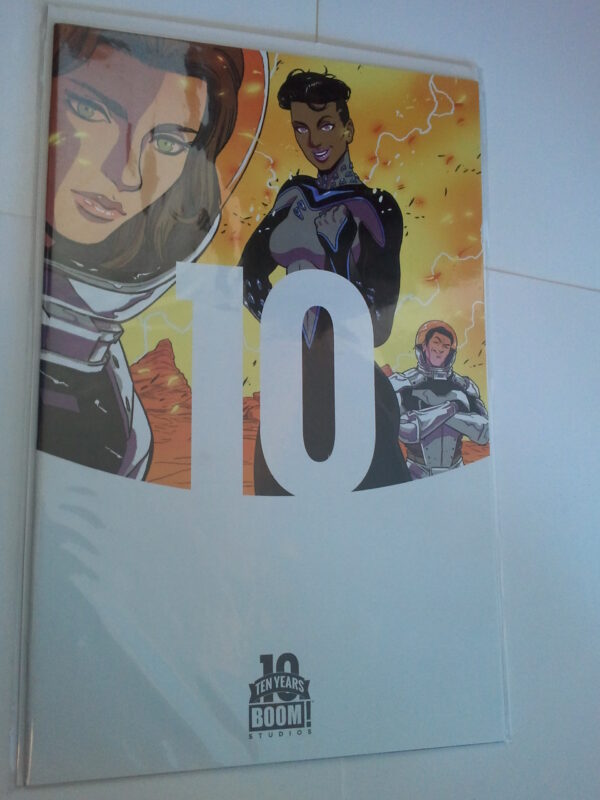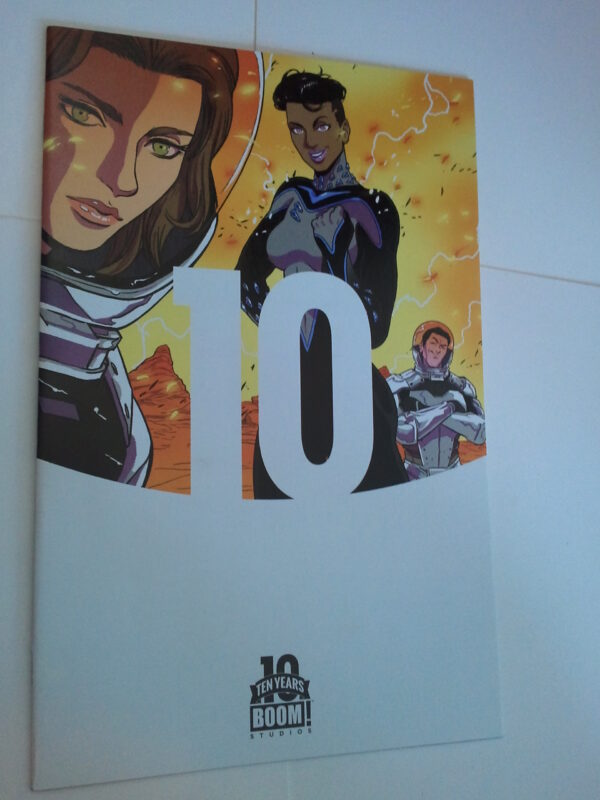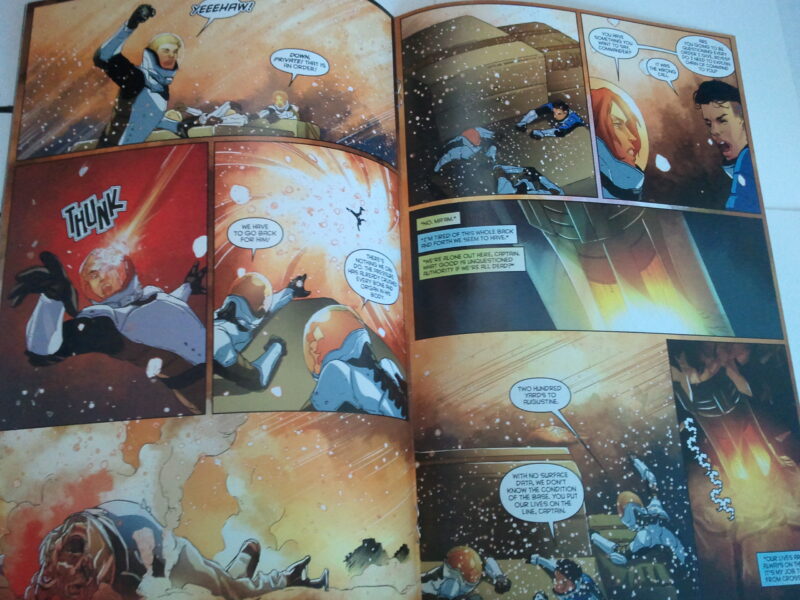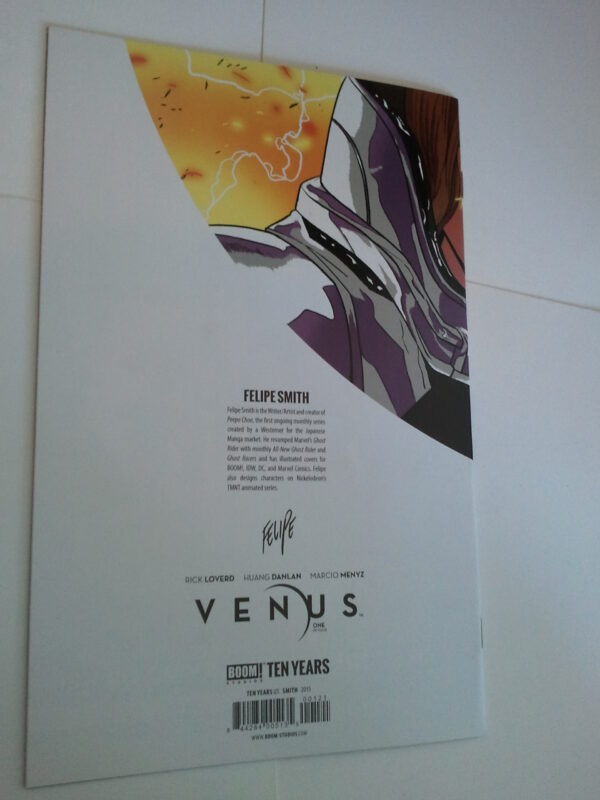Venus #1 NM Smith 10 Years Variant 1:10 Incentive Cover Boom Rick Loverd Danlan
$94.99
Description
Venus (2015 Boom) #1B
Published Dec 2015 by Boom Studios
Limited 1 for 10 Retailer Incentive Variant Cover
Written by Rick Loverd
Art by Huang Danlan
Cover by Felipe Smith
28 pages, full color
In 2150, Earth’s resources are depleted, and countries race to outer space to mine what they need from other planets. China has laid claim to Mars, so the U.S. and its allies have to make do with getting what it needs from the inhospitable world of Venus. But for a group of Americans making its way there, survival has become all too real. After their ship crash-lands on the planet, the scrappy crew is forced to do whatever it takes to navigate the harsh landscape in their journey to find the science base they were flying toward. In the vein of great adventure survival stories like Lost and The Martian, there’s only one reality on Venus-adapt or die.
When you first look at Venus’s stats, it’s easy to think it’s Earth’s twin.
After all, it’s nearly the same size, with a diameter of 12,014 km (95% Earth’s). It has about 82% the mass of Earth, giving it almost the same density as our home planet, which in turn implies it’s made of very nearly the same material: Iron, rock, and so on.
But when you look more closely, things get ugly fast. Venus is so hostile an environment that it would make the devil jealous. The atmosphere is incredibly thick, with a surface pressure 90 times higher than Earth’s. The air is almost entirely carbon dioxide, which generates a ridiculous greenhouse effect. The surface temperature is a sweltering 460° C (860° F). The clouds there aren’t made of water vapor like ours… they’re composed of sulfuric acid.
Yes, seriously. Venus isn’t Earth’s twin. It’s Earth’s evil twin.
“Tomorrow, May 15th, 2150, is a day humanity will forever remember.”
Part One: The Saboteur
Captain Kincaid delivers his best Neil Armstrong speech as his ship—the first colonizing mission to Venus—plummets perilously toward the planet surface. The pre-recorded inspirational message provides exposition for why this mission is so vital (the Pan Pacific Alliance has already claimed Mars; America needs a win in this new celestial cold war), but the real mystery promised in the chapter title of Venus #1 is never really answered. Instead, Rick Loverd and Huang Danlan drop us in media res into the harrowing crash-landing and its aftermath, as the hapless crew struggles to survive.
The stakes are high from the outset, and Loverd expertly crafts his characters through the power vacuum left by Kincaid’s (gruesome) demise at the beginning of the issue. The plot of the first issue is simple: civilian pilot Pauline Manashe faces down military lieutenant Alejandra Reyes for both authority over the mission and course of action. With a potentially damaged nuclear reactor and tumultuous Venusian atmosphere, Manashe wants to take the surviving team members outside of the ship and head for the pre-established Augustine compound. Reyes, concerned that the Augustine compound may also be compromised and that traveling outside of the ship (aptly named the Mayflower, btw) could recklessly endanger the entire crew, asserts herself as the military voice on the crew. Loverd structures the entire issue around these two and, in its simplicity and nuance, Venus #1 manages to balance its hard science-fiction elements with this deeply personal conflict. Add a compelling cliffhanger and you’ve got the makings of a great first issue for what should be an engaging mini-series from BOOM!
Huang Danlan and Marcio Menyz provide some stunning visuals in Venus #1. Set in 2150, it would be easy to go wild with speculative design, but Danlan instead grounds the aesthetics of Venus in reality. Fans of modern sci-fi films like The Martian will recognize the just-a-bit-ahead futurism in Venus. Design aside, Danlan’s artwork also has a dynamic quality necessary to producing the level of tension and terror in the initial crash and its aftermath. Menyz colors Venus in stark oranges and reds, countering the reader’s expectations while furthering the desolation of the Mayflower team. Really engaging visuals here.
Worth a look, especially for fans of modern sci-fi films like Sunshine and Europa Report. Rick Loverd and Company deliver a compelling first issue in Venus #1, and the chapter title of “The Saboteur” suggests a much more complex story going forward.
It’s easy to criticize the portrayal of scientific concepts in popular media. I’ve done it plenty, while trying to not get uppity about it, because the so-so science in entertainment can be a ready-made introduction to a real topic – one that’s often more interesting than the fictionalization.
Since 2008, Rick Loverd has been trying to make my job even easier by tightening up the facts in films and other stories, as Program Director of the Science and Entertainment Exchange. The group, part of the same National Academy of Sciences that advises the U.S. government on all things science and technology, connects entertainment professionals with experts who can appropriately advise on and tweak any glaring inaccuracies in a particular project, with the hope that both sides will be better for it.
Loverd’s played for both sides himself, with writing credits for NBC’s Friday Night Lights and a Top Cow series called Berserker under his belt. Now he’s returning to comics with a four-issue mine-series for BOOM! Studios called Venus, with the first slice of life on the solar system’s hottest rock dropping this week. Can Loverd practice what he preaches on scientific accuracy in media, and is it good?
Venus #1 takes place in the year 2150, a familiarly unfriendly time in which the Earth has been stripped of most of its resources and the world’s superpowers are forced to forage off-planet to make economic ends meet. The powerful Pan Pacific Alliance has strong-armed its way onto Mars, where they’ll be able to snag mineral-rich asteroids. Don’t tell Mark Watney, but that place is a paradise compared to the fantastic hellscape the Americans are left to conquer, when they send their Mayflower spacecraft to Earth’s “twin.”
Unsurprisingly, the mission falls apart almost immediately as there’s a shake-up in the ranks and a rip in the ship. As many comics do these days, the story opens in the thick of the action, leaving us to wonder how things got so bad and where the characters can go from here. The joint military/civilian venture crash lands just short of their target and they have to hoof it across the inferno to reach safety at the base. Or so they think.
It’s mentioned early on that some preliminary terraforming has already occurred before our heroes arrive, so it’s not quite as bad as it could be. Still, the crew’s trek to their new home is rained on by sulfuric acid hail, and they’re acutely aware of how the incredibly thick atmosphere will crush them like bugs if the pressurized space suits fail. That’s some good science that literally illustrates what walking on the surface of Venus might be like.
En route, the Mayflower’s engineers try to repair the ship’s stellarator reactor, a shout out to a weird idea that’s trying to make nuclear fusion a viable energy source. Fair enough, this is science fiction, and some folks in the real world think the damn thing might even work, but the fact that the ship’s captain thinks a botanist can assist on it is strange.
Rick Loverd: I have (gasp) 15 years of entertainment industry experience including 2 years at a talent agency, 6 years working on TV shows, and 6 years in my current 9 to 5. I am the Program Director of The Science & Entertainment Exchange, a program of the National Academy of Sciences (NAS). The NAS is a private nonprofit institution with a mission to seek out and disseminate the very best nonpartisan peer reviewed science to the world.
In my role at NAS, my program has consulted on more than 1,400 mainstream film, TV, and video game projects since November of 2008. We do a good deal of work with Marvel, Warner Brothers, and Disney. A few highlights for us would be Iron Man 2, Thor, Tron: Legacy, Avengers: Age of Ultron, Star Trek: Into the Darkness, Man of Steel, Fringe, Castle, The Bourne Legacy, The Good Wife, Captain America: The Winter Soldier, Ant Man and Big Hero Six. I basically get to be in the room (or on the phone) with creative people and scientists every day, talking about the future and lots of other great nerdy stuff. It’s a fantastic nexus point to learn from the best in many fields.
What do you get when you blend fantasy and science fiction adventure with science of the real world? Venus, a new mini-series from BOOM! Studios written by Rick Loverd (Beserker). In addition to writing, Loverd has a unique credential to his name: he happens to be the Program Director of the Science & Entertainment Exchange, a program that consults on some of the biggest Hollywood projects (Iron Man 2, Tron: Legacy, Star Trek: Into Darkness, Big Hero 6) in order to ensure scientific accuracy. EW spoke to Loverd about marrying science fiction and real-life science, how that contributed to his creative process, and more.
EW: You have a unique perspective putting this comic together, in that you can make it as wild and sci-fi as possible, but you also have your background of what’s scientifically plausible from your work with the Science & Entertainment Exchange. What was that creative process like, when you put Venus together?
RICK LOVERD: I’m fortunate in that my job requires me to meet interesting people every day. The Exchange is a program of the National Academy of Sciences that connects Hollywood professionals to science consultants on feature films, TV shows, and video games. If you’re not able to write full time for whatever reason and you love writing, finding a job that keeps you inspired daily is a great strategy. The creative process on Venus and my process in general, not surprisingly, is pretty research intensive. I love to meet and engage with new people so, for me, I prefer to sit down with a field expert from a place like NASA, JPL, SpaceX, or Virgin Galactic, and ask direct preplanned questions. In-person interviews allow you to ask the specific questions: “My characters just crash-landed with a fusion reactor, what specifically would be the concern? Could it blow up? Would it melt down? What would the meltdown look like?”
EW: The story is science fiction but it’s also a very specific survival tale, and there’s a very human aspect to it — the crew brings with them all their baggage. It really feels like a humanized story rather than just a story about people who crash on a planet, and I love that. Was that part of the appeal of storytelling?
First, thank you! It’s easy in a harder sci-fi concept to get lost in a technically interesting idea and give your characters the short shrift. That’s short-sighted thinking if you’re world building. Every project I develop has to have a life beyond the first story and good characters form the bedrock for ongoing drama. Think about the five or six most difficult people with whom you have to conduct your daily affairs, those people who you try to avoid if at all possible. Now make them unfathomably attractive in your mind and imagine that you’re thrown into an extreme survival situation with them. This is my favorite playground for creative storytelling.
EW: What made Venus the right choice to set your story there? Was there something specific that you found while researching?
I was reading up on planetary science when I stumbled upon something I’d never heard before: A couple of billion years ago, Venus and Earth were likely sister planets, with similar climates. When you consider that today Venus hosts hellacious temperatures capable of melting lead, it’s astounding that once upon a time it may have been quite temperate. What happened? The most probable answer is that Venus fell victim to runaway volcanism, belching untold tons of noxious chemicals into the atmosphere. What’s terrifying is that the runaway greenhouse effect in its atmosphere could very much be a cautionary tale for Earth. This is what I find most fascinating about it. Here at home, all of humanity is participating in a massive uncontrolled experiment when we throw mass quantities of methane and carbon dioxide into the sky every day. No one knows whether or not we are capable of the sort of drastic downfall that scorched Venus, but the temperature keeps getting higher, the storms keep getting bigger, and the ocean keeps getting more acidic.
EW: Can you talk a little bit about the collaboration with your creative team, Filip and Huang? From the issues I’ve seen, there’s a definite connection between you.
Filip’s a story wizard. From the time he edited my last comic, Berserker, he and I have wanted to find a project together. It’s a wonderful feeling as a writer to have someone capable and smart to help you whenever you drive your story into a ditch. Filip and I developed Venus together after pitching dozens of ideas back and forth over the years. I wish we could have fully co-written the story. As it was, we collaborated quite a bit and it wouldn’t be nearly as good without his considerable input. When BOOM! asked me for my thoughts on artists for Venus, I felt strongly that a mostly male team (Jasmine Amiri’s editing notes helped majorly shape the piece at each step) telling a story centered around a female protagonist would benefit greatly from a female artist. Huang Danlan perfectly captures Pauline’s strength, decisiveness, self-doubt, and femininity. Pauline reminds me of the women at the center of my life, and Huang brought her to life on the page.
EW: Between television (shows like The 100) and movies (like The Martian), survival stories are a really big thing in entertainment right now. What made you feel like this was the right time to bring this story to comics?
Humanity is at an interesting crossroads at the moment. Your parents might remember the moon landing, however only our machines have conquered Mars and flown beyond. I strongly believe that our species needs to send people to deep space; we must once again become explorers—it’s a fundamental part of our humanity. It’s been more than a century since America had a frontier as part of our identity. I’ve heard it argued before that the NFL rose out of a male need for Americans to have some conduit through which to define their masculinity once “the west was won.” It’s possible that survival tales and full-contact sports remind us that our ancestors lived in a world with much higher stakes than our modern ease-of-use existence. Maybe we need something to remind us of this lost part of our psyche as we watch The Revenant from a reclining theater seat with a small-batch beer in a glass shaped like a teardrop.
EW: BOOM! Studios has some unique and wonderful properties…what made it the right platform for you to tell your story?
I love writing comics. It’s a format that allows for unfettered creativity, massive scale, and unlimited special-effects budgets. Science fiction in particular sounds expensive whenever it’s pitched as a screenplay. It’s much easier to fulfill your true authorial vision in a sci-fi comic than it is in other media. I particularly appreciate the freedom I have to tell a story at scale. Within the universe of comic book publishers, BOOM! was an obvious choice on the merits of its team. And I’m looking at you Eric, Jasmine, Ross, Filip, Mel, and Stephen.
IEW: know you tried to make this story as real as possible, so did you learn anything new while putting this together?
The most surprising thing I’ve learned recently is that there is currently a place in Venus’ upper atmosphere that has the same pressure as Earth, meaning it’s feasible that we may one day park a probe there without having to specially reinforce its hull to take the punishing crunch of the surface. Perhaps even one day there may be a manned mission to that place. I’d like to see us send someone there.
EW: What do you hope readers take away from this story?
If the readers simply enjoy the story, find it satisfying, and want to see more happen in this comic world, that would be a thrill. If five or 10 years from now a young woman walks up to me on the floor at Comic-Con and tells me that Pauline and Alejandra helped push her to consider pursuing a career in engineering, I will die happy.
Near mint, 1st print. Bagged & Boarded.
Related products
-
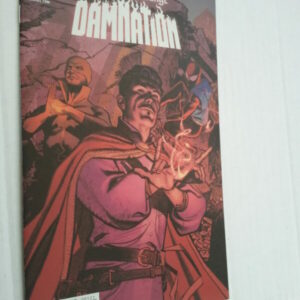
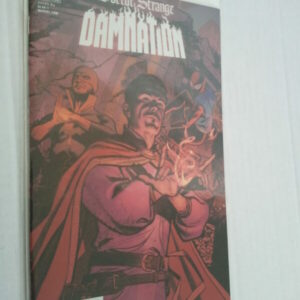
Doctor Strange Damnation 1 NM Variant Connecting Cover Smallwood Multiverse Mad
$89.99 Add to cart -

Devil May Cry 1B NM CGI Cover Dreamwave Brad Mick Pat Lee Video Game Comic
$84.99 Add to cart -
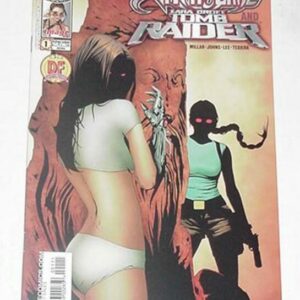
Witchblade Tomb Raider 1 Crossover DF Cvr Mark Millar Geoff Johns Jae Lee Mark T
$49.99 Add to cart -
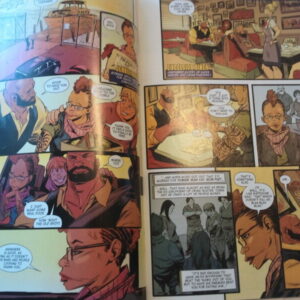
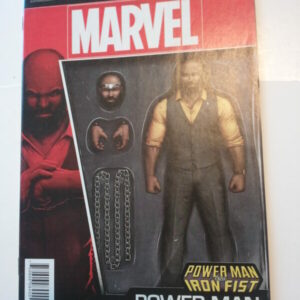
Power Man and Iron Fist # 1 NM Luke Cage Variant Cover David Walker Greene 1stpr
$44.99 Add to cart
